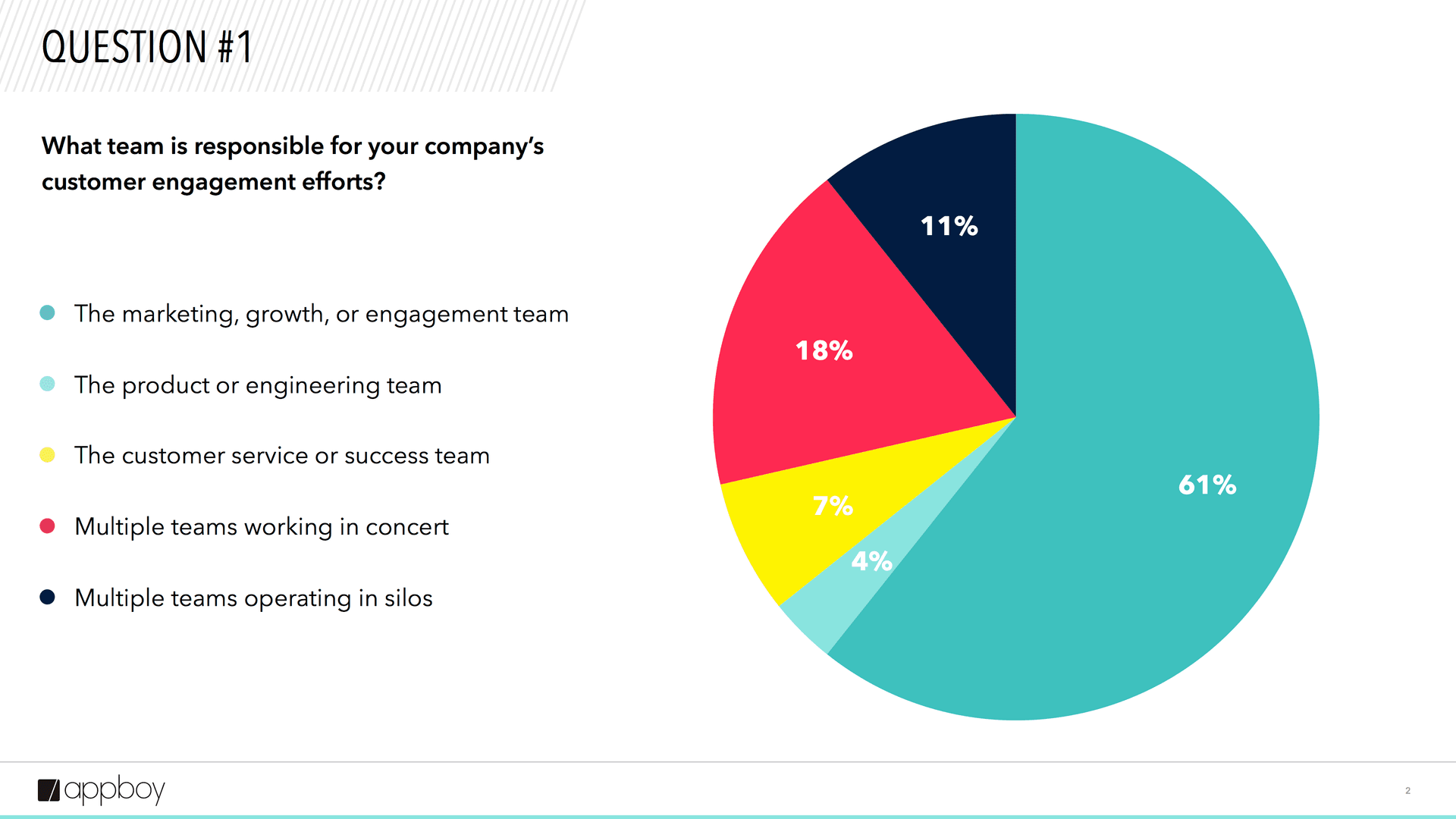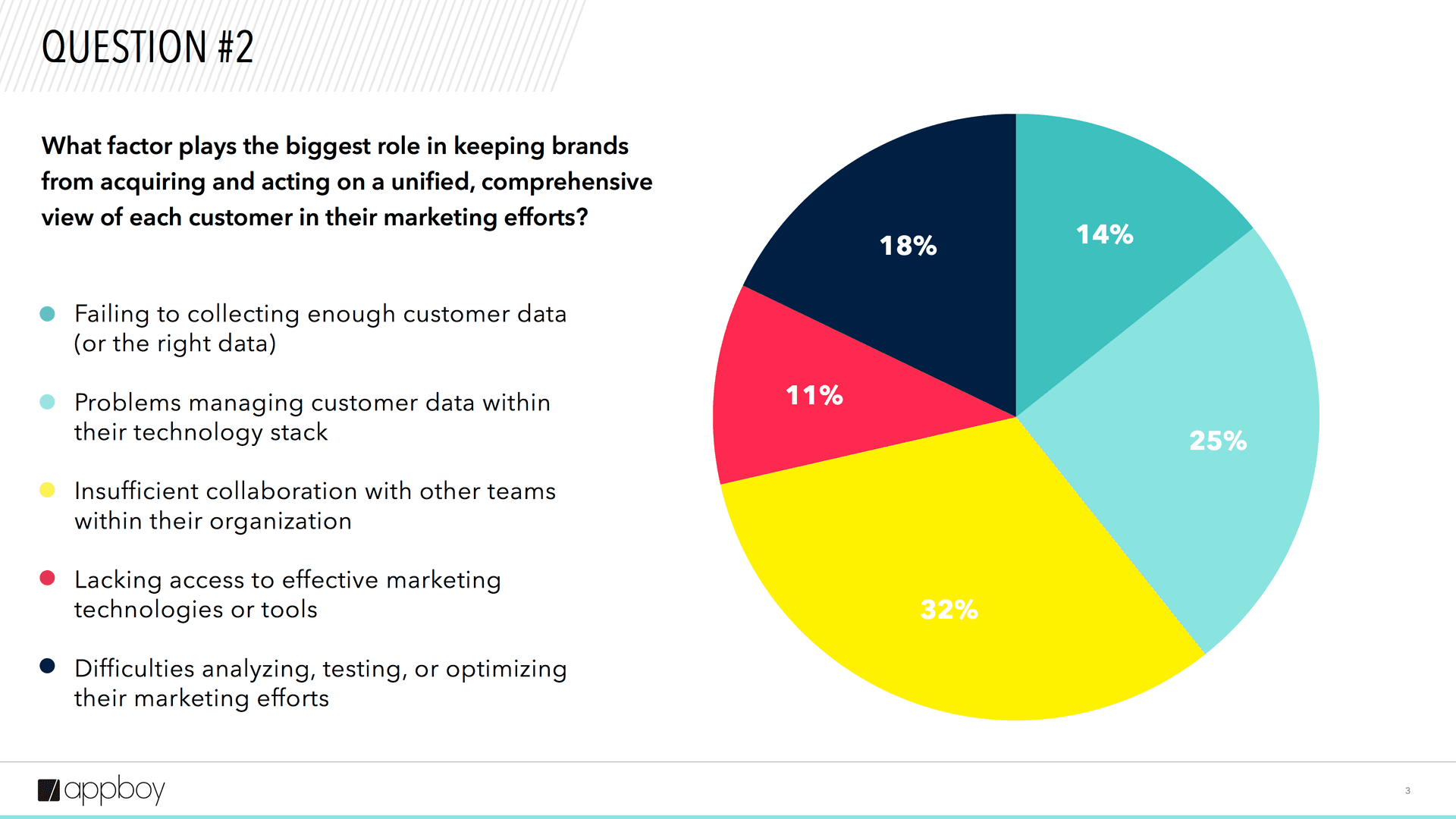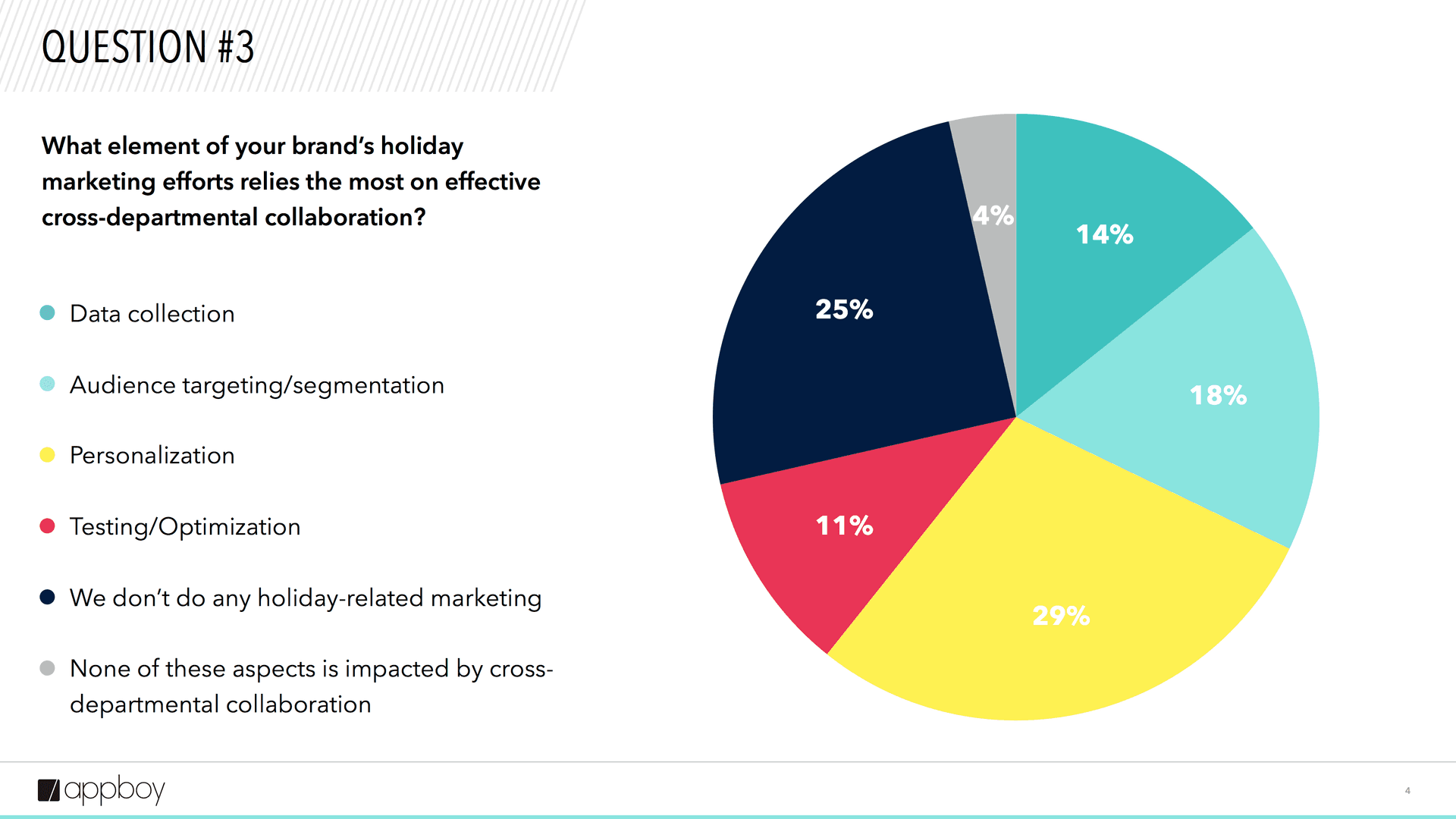Customer Engagement—It Takes Teamwork
Published on September 15, 2017/Last edited on September 15, 2017/5 min read


Todd Grennan
Content Production Principal, Content Marketing at BrazeEach day, the average consumer receives 60+ push notifications, 120+ emails, and sees more than 5,000 distinct advertisements. That makes cutting through this vast barrage of marketing outreach to reach, engage, and build a relationship with your audience a real feat. The messages that resonate with today’s customers are targeted and personalized to provide real value—but providing those kinds of experiences doesn’t just happen.
To get a better sense of the challenges brands face when it comes to effectively understanding and engaging their audiences across channels, platforms, and devices, we sat down with 28 attendees at an event co-hosted by Appboy, mParticle, Appsflyer, and Amplitude during this year’s Mobile World Congress Americas conference. And while they don’t constitute a statistically significant sample, this group of marketers, salespeople, senior executives, and others from leading brands like Pinger, Twitter, and eBay brings years of experience and unique perspectives that are worth hearing. Here’s what we learned:
1. Marketing owns customer engagement—but maybe they shouldn’t go at it alone

The rise of the mobile has made marketing a lot more intimate. Instead of reaching customers with billboards, television ads, and other one-to-many approaches, it has become possible to directly engage your audience members with highly relevant, valuable outreach sent via email, push notifications, and other channels, all of it powered by mobile devices’ nuanced data collection. That change has made marketing, growth, and engagement teams central to the customer experience—61% of our respondents said that these teams were ultimately responsible for customer engagement. But for some companies, that shift has turned customer engagement into something of a silo.
There’s nothing strange about a marketing team running customer messaging and outreach. But unless they’re also running your brand’s website and app and communicating with customers when they have an issue, the customer experience is going include interactions that this team can’t control on its own. To ensure a cohesive customer journey that fits customer expectations and provides concrete value across the board, marketing needs to work with product, customer service, and other internal teams that touch the brand experience.
2. Poor communication between customer engagement technologies and internal teams are a major issue

Understanding, engaging, and retaining your audience isn’t easy. You need the right customer data. The right tech stack. Good communications between internal teams. The skills and knowledge to make the most of the tools at your disposal. Any way you look at it, there’s a lot of places where things can break down.
When we asked our respondents what issues they saw as the biggest obstacle for brands seeking to put together (and act on) a holistic view of each customer, two main factors stood out. 32% of the people we talked to identified poor collaboration between internal teams as the main blocker, while 25% pointed the finger at data management problems within different layers of their marketing tech stacks.
In both cases, the inability to communicate effectively makes it harder to provide customers with a coherent, appealing experience. A stack where the different components can’t exchange data effectively raises the risk that, say, a brand will send an app rating message to a customer who has a support ticket open; similarly, a company where the marketing team doesn’t work well with their product and UI/UX teams might end up with a messaging and app experiences that clash in annoying ways.
3. When it comes to complex holiday campaigns, effective personalization doesn’t happen without teamwork

Not every brand builds marketing campaigns around holidays and other cultural tentpoles—but those who do often have to manage a lot of moving parts. Advertisements. Customer messaging. Data collection from mobile devices, computers, and in-store point-of-sale systems. Campaign targeting and personalization and testing and optimization. Teamwork is essential if you want to make it all work.
The hardest thing to get right without effective collaboration? According to our respondents, it’s personalization—29% said that individually customizing audience outreach relied more on partnership across teams than any other part of their holiday marketing efforts. Done right, personalization can be a powerful way to make your customer engagement efforts more impactful; done poorly, it can be creepy, or just plain bewildering. So before you start planning your next big Hanukkah campaign, make sure your team and the other units within your organization that touch personalization are all on the same page.
Final thoughts
When it comes to providing customers with the sorts of relevant, valuable experiences that drive long-term customer loyalty, teamwork is key. If you have a stack full of incompatible technologies or teams within your organization that don’t communicate effectively, your customers are going to feel in the ways your interactions with them. And new developments driven by tech giants like Apple and Google are only going to make this kind of teamwork more important.
Interested in digging deeper? Watch our exclusive webinar, where we take a look at new developments in technology, changing customer expectations, and how they’ll affect the way you build relationships with your customers.
Be Absolutely Engaging.™
Sign up for regular updates from Braze.
Related Content
View the Blog
How behavioral marketing turns data into personalized experiences

Team Braze

How Braze supports exceptional customer engagement during Black Friday, Cyber Monday, and beyond

Todd Grennan

How to overcome messaging fatigue this holiday season
